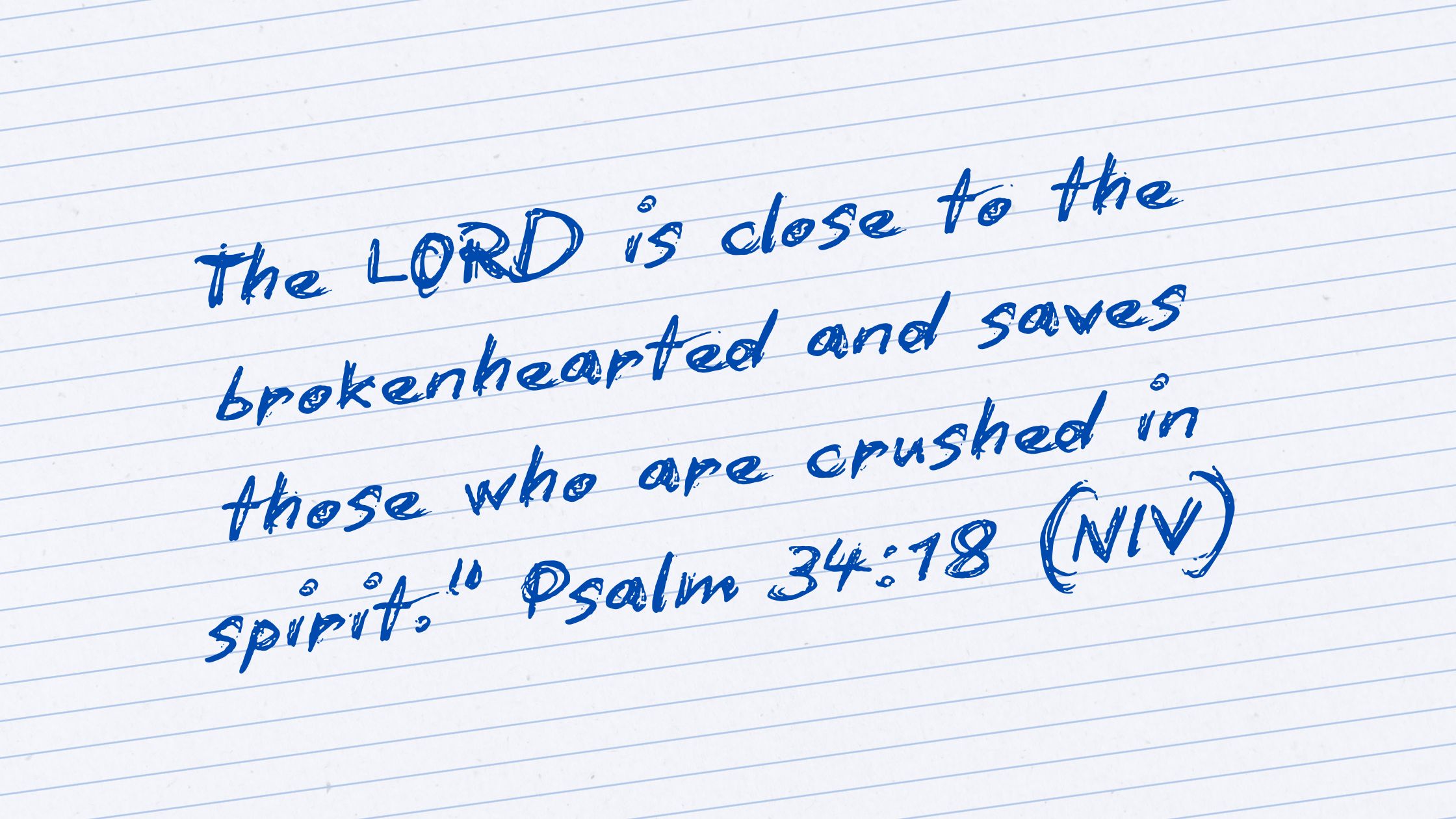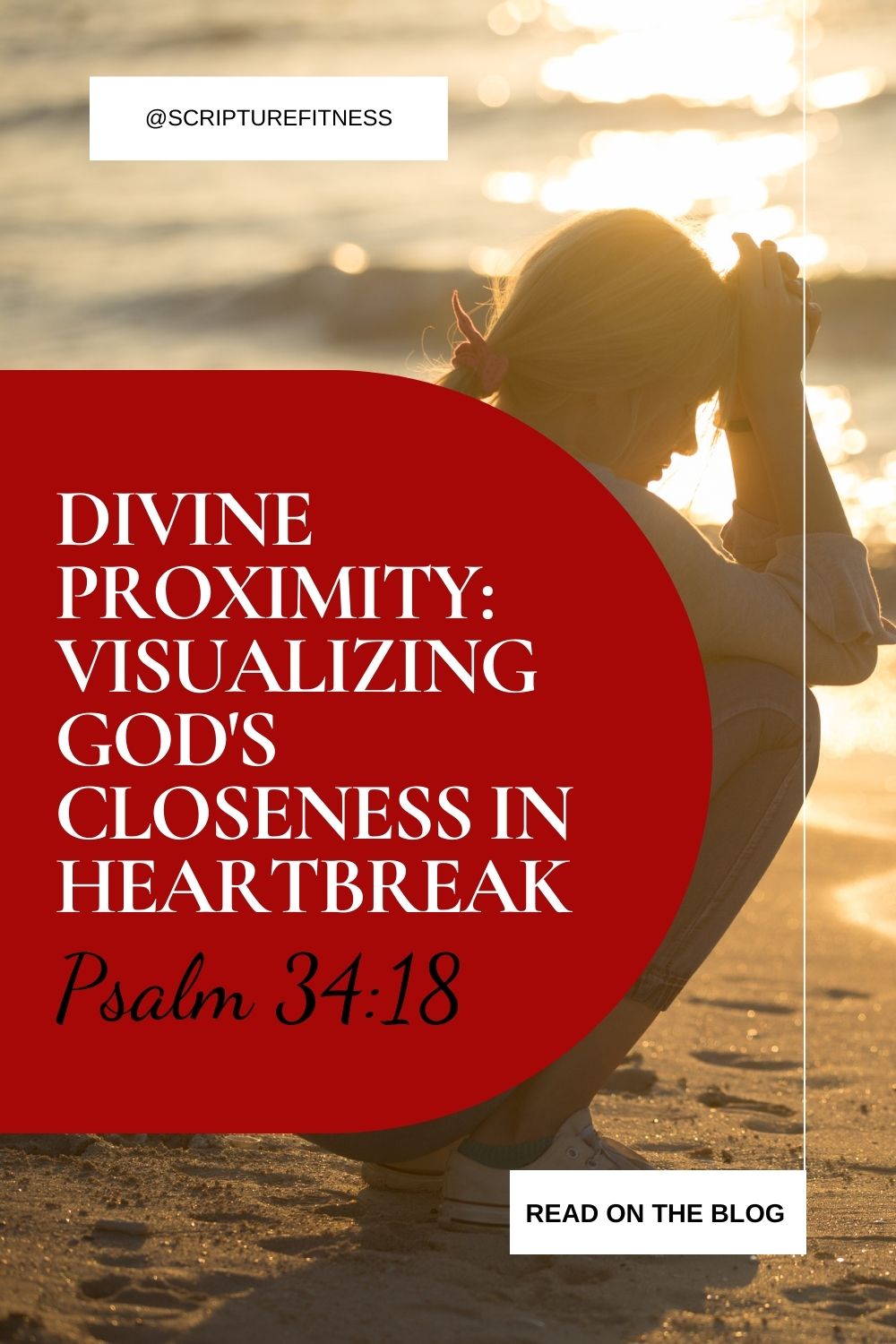The pain catches you off guard.
Perhaps it's an anniversary of loss. A song that triggers memories. A casual comment that reopens old wounds.
And suddenly, that heartbreak you thought you'd processed returns with unexpected intensity.
In these moments, well-meaning friends offer familiar comfort: "God is with you." "He sees your pain." "You're not alone."
These truths should comfort. Yet sometimes they feel like abstract theology intellectually true but emotionally distant.
The gap between knowing God is near and actually experiencing His presence can seem vast, especially when your heart feels shattered.
It's not that you doubt God's existence or even His care. It's just that pain has a way of creating perceived distance, leaving you feeling isolated in your emotional wounds.
We've tried to bridge this gap through worship.
We've reached for connection through prayer.
We've reminded ourselves of theological truths about God's omnipresence.
And still, in moments of acute heartbreak, God can feel galaxies away.
My own journey through grief transformed when I stopped trying to escape the very place where God promised to meet me...
And began visualizing divine proximity specifically in brokenness, exactly as David describes in one of Scripture's most tender promises about emotional pain.
If you're navigating heartbreak while longing to experience God's nearness as more than just a theological concept
Let's explore how one powerful verse can revolutionize your understanding of divine presence in the very places that hurt most.
SCRIPTURE (Warm-Up)

"The LORD is close to the brokenhearted and saves those who are crushed in spirit." Psalm 34:18 (NIV)
Hold these words gently.
Let them whisper to the tender places within you.
Notice the intimate geography they describe.
Closeness... brokenheartedness... crushed spirit... salvation.
This isn't abstract theology. It's a map of divine movement toward human pain.
The profound revelation in this verse challenges our natural assumptions:
Broken heartedness doesn't distance us from God, it actually creates a place of divine proximity.
The Hebrew word for "close" (קָרבֿב/qarov) conveys physical nearness, intimacy, and immediacy. This isn't distant observation but close contact the God of the universe drawing near to wounded hearts with tender attentiveness.
And the term "brokenhearted" (נשְִׁבְּרֵי־לבֵ/nishberei-lev) literally describes a heart that has been shattered, fractured, or broken into pieces. Not merely sad or disappointed, but fundamentally fragmented.
What's remarkable is that God doesn't require us to reassemble our hearts before approaching. The brokenness itself becomes the meeting place. The fractures in our emotional landscape don't repel divine presence but somehow attract it.
Notice too that God doesn't merely observe brokenheartedness but actively "saves" those crushed in spirit. The Hebrew word (יבֿשִׁיעַ/yoshia) implies rescue, deliverance, preservation active intervention in our emotional devastation.
When we approach emotional healing through this verse, our entire perspective shifts.
We stop seeing heartbreak as evidence of divine absence.
We start recognizing it as the very context for divine proximity.
So before trying another technique to escape or numb emotional pain, pause here:
One verse.
One profound promise.
One transformative truth: God draws uniquely close to broken hearts.

ENGAGE (Strength Training)
Let's move beyond intellectual understanding to visual engagement with this verse. Creating tangible representations of spiritual truths helps bridge the gap between theological knowledge and emotional experience.
Explore these three visual approaches to Psalm 34:18 and discover new dimensions of divine proximity in heartbreak:
1. Map Your Heartbreak Landscape
The verse presents a counterintuitive geography God moving toward, not away from, our emotional devastation. Let's make this movement visible:
Take a blank page and draw the outline of a heart. Unlike the typical valentine shape, create one with visible fractures, cracks, or broken pieces a representation of your actual emotional landscape.
Within each broken section, write specific aspects of your heartbreak:
Particular losses you're grieving
Relationships that have caused pain
Dreams that have been shattered
Aspects of yourself that feel damaged
Disappointments that linger
Now, using a different color, shade the areas around and within these fractures representing God's presence flowing specifically into the broken places. Add small symbols of divine proximity near each crack: perhaps a small flame, a gentle hand, or simply the word "close."
For each area of brokenness, write a brief sentence beginning with: "Even here, God is..."
This mapping exercise helps visualize the paradoxical truth of Psalm 34:18, that the very fractures that cause pain become channels for divine nearness, not barriers to it.
2. Illustrate Divine Movement
The verse describes God's deliberate movement toward human heartbreak—a direction of approach worth visualizing:
Draw a simple pathway across your page. On one side, represent your broken heart or crushed spirit using symbols or simple words. On the other side, represent God using whatever imagery resonates with you perhaps light, a shepherd, or simply the name "Lord."
Now draw arrows indicating movement along this pathway. Unlike our typical assumption (that we must move toward God), draw the primary arrows showing God moving toward brokenness. These arrows might be:
Larger than other elements, showing the significance of this movement
Flowing or curved, suggesting gentleness rather than invasion
Varied in size, indicating multiple approaches at different times
Along these arrows, write specific ways you've glimpsed God moving toward you in pain:
Through a friend's precisely timed message
In a moment of unexpected peace
Through Scripture that seemed written exactly for your situation
In a memory that brought comfort
Through tears that somehow brought release
This pathway illustration helps visualize the active nature of God's closeness not static presence but deliberate movement toward your specific heartbreak.
3. Create Proximity Portraits
The verse uses the powerful image of closeness or nearness, a concept worth exploring through specific manifestations:
Divide a page into sections labeled with different dimensions of divine proximity:
Physical/Sensory Closeness (how God's presence might be sensed)
Emotional Closeness (how God connects with specific feelings)
Cognitive Closeness (how God engages with your thoughts)
Relational Closeness (how God appears through others)
Temporal Closeness (how God's timing reveals nearness)
In each section, sketch simple representations of how this aspect of proximity might appear in your experience. These could be:
Symbols that represent each type of closeness
Brief phrases describing experienced moments of that proximity
Small scenes showing what that dimension of closeness looks like
This proximity portrait helps expand your vision of what "the LORD is close" might actually look like beyond abstract theology identifying specific, tangible manifestations of divine nearness you can watch for in your experience.
EXPERIENCE (Cool Down)
Understanding God's closeness to broken hearts is comforting. Engaging with it visually makes it more tangible. But the real transformation comes when we experience this proximity in our lived emotional reality.
Let's explore three ways to move this verse from concept to experience:
1. Practice Proximity Awareness
Divine closeness in heartbreak isn't something we create but something we notice. Develop your capacity to recognize God's nearness through intentional awareness:
For the next week, establish a daily "proximity pause", a brief moment specifically dedicated to noticing divine closeness within your broken places.
Find a quiet space and place your hand over your heart. Take three slow breaths, and then gently name your current heartbreak: "Right now, I'm feeling broken about..."
Then, without rushing to fix or resolve these feelings, simply whisper: "The Lord is close to the brokenhearted." Remain in this awareness for 60-90 seconds.
As you sit in this space, note anything you sense of God's proximity perhaps a subtle shift in emotion, a meaningful thought, a memory that brings comfort, or simply a moment of quiet acceptance.
Before ending, complete this sentence either silently or in a journal: "Today, God's closeness feels like..."
This practice isn't about manufacturing feelings or forcing spiritual experiences. It's about developing awareness of a divine proximity that Psalm 34:18 promises is already present in your heartbreak.
2. Create Tangible Reminders of Divine Nearness
Our physical senses can become pathways for experiencing spiritual truths. Engage your senses to embody the reality of God's closeness in broken places:
Select or create a small tangible symbol of divine proximity something you can physically touch as a reminder of God's nearness in heartbreak. This might be getting a pocket bible, this is a very portable bible some call it the checkbook bible.
Dedicate this object through a simple prayer: "Lord, when I touch this, help me sense your closeness to my broken heart."
Place this proximity token somewhere you'll encounter it during emotionally vulnerable moments perhaps in your pocket, on your nightstand, in your car, or at your workspace.
When you feel heartbreak surfacing, hold your bible and simply breathe the words: "The Lord is close." Allow the physical sensation to anchor the spiritual truth in your emotional experience.
Over time, note how this tangible reminder affects your perception of divine presence in moments of pain. Many find that physical touch becomes a bridge between abstract belief and felt experience.
3. Speak Heartbreak Prayers
The verse doesn't just tell us God is near to broken hearts, it implies we can communicate directly from within that brokenness. Develop a practice of honest prayer from the very center of your pain:
Create what I call "heartbreak prayers", short, honest expressions spoken directly from broken places without theological filtering or spiritual niceties.
Begin by writing three to five such prayers on small cards or in a dedicated journal. These might sound like:
"God, this hurts unbearably. Are you really here in this pain?"
"I feel completely crushed right now. Please show me you're close."
"My heart is in pieces over ________. I need to sense your nearness."
"This brokenness feels endless. Save my crushed spirit."
Carry these heartbreak prayers with you. When waves of emotional pain arise, pull out a card and speak the words aloud—not as formal prayer but as honest communication from your actual brokenness to the God who draws near to it.
After speaking each heartbreak prayer, pause in silence for 30-60 seconds. Don't rush to fill the space with more words. Simply remain aware of the promise that this heartbreak has actually drawn God closer, not driven Him away.
This practice helps transform theological knowledge into lived conversation—engaging with God from within brokenness rather than trying to move beyond it first.
YOU'VE DISCOVERED THE MEETING PLACE OF DIVINE NEARNESS
What you've just explored transcends conventional approaches to emotional healing.
You've encountered a biblical revelation that redefines heartbreak not as divine abandonment but as a place of unique divine proximity.
This isn't about quickly fixing emotional pain.
It isn't about maintaining spiritual positivity despite inner fractures.
It's about discovering that the very places that hurt most become unexpected spaces of sacred encounter locations where God draws uniquely near.
The transformation unfolds gradually. As you practice proximity awareness, engage tangible reminders, and speak heartbreak prayers, your perception shifts.
Not because your pain magically disappears, but because you begin experiencing divine presence within it rather than awaiting it beyond it.
If you've felt spiritually distant during seasons of emotional devastation...
If you've wondered where God is in your most broken places...
Let this verse illuminate a revolutionary truth:
Heartbreak doesn't push God away, it draws Him uniquely close.
The very fractures in your emotional landscape become channels for divine proximity.
You don't need to move beyond brokenness to experience God's presence, heartbreak itself becomes the meeting place.